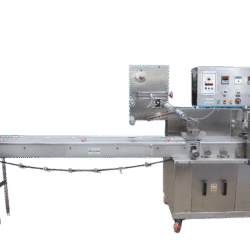Getting rid of an old car shouldn’t cost you money. Yet thousands of Australians pay towing fees, storage costs, and disposal charges just to remove vehicles they no longer want. There’s a better way.
The car removal industry has transformed dramatically over the past decade. What was once a fragmented market of scrap yards and dodgy dealers has evolved into a professional service that benefits both vehicle owners and the environment. Today’s Sydney auto removal companies offer something their predecessors never could: immediate payment combined with free collection, creating genuine value for customers across New South Wales.
This shift represents more than convenience. It’s fundamentally changed how Australians approach end-of-life vehicle disposal, turning what was traditionally a cost centre into an opportunity for instant cash. Understanding how this system works—and why it’s become so popular—reveals insights into modern recycling economics and consumer behaviour.
The Economics Behind Free Removal and Instant Payment
The business model seems counterintuitive at first. How can companies afford to collect vehicles for free whilst paying customers immediately? The answer lies in sophisticated recycling economics and streamlined operations.
Modern vehicles contain valuable materials. Steel, aluminium, copper, and platinum-group metals from catalytic converters command strong prices in global commodity markets. A typical sedan contains roughly 1,200 kilograms of recyclable steel alone. When multiplied across thousands of vehicles processed annually, these materials generate substantial revenue streams.
According to the Australian Automotive Recyclers Association, the industry processes over 500,000 end-of-life vehicles annually, recovering approximately 86% of materials by weight. This efficiency has improved dramatically since 2015, when recovery rates hovered around 75%. Better dismantling techniques, automated sorting systems, and stronger commodity prices have made the model financially viable.
Companies that offer instant cash payments have typically developed extensive networks of buyers for recycled parts and materials. They’ve eliminated intermediaries, allowing them to capture more value from each vehicle whilst passing savings to customers through competitive cash offers.
How the Instant Cash Process Actually Works
The transaction follows a remarkably straightforward pattern. Vehicle owners contact removal services through phone, website forms, or mobile apps. They provide basic information: make, model, year, condition, and location. Within hours—sometimes minutes—they receive a cash quote.
Accepting the quote triggers immediate scheduling. Most services operate seven days per week, with many offering same-day collection. The tow truck arrives at the specified location, the driver inspects the vehicle to verify its condition matches the description, and payment changes hands on the spot.
This immediacy represents a significant departure from traditional scrap processes, which often involved:
- Driving the vehicle to a scrap yard (problematic for non-running cars)
- Waiting for inspection and appraisal
- Negotiating prices in person
- Receiving payment days or weeks later via cheque
Modern services have compressed this timeline from weeks to hours. The efficiency benefits customers through convenience whilst helping companies maximise vehicle throughput and cash flow.
Beyond Scrap: The Full Spectrum of Vehicle Removal
The term “car removal” encompasses more than end-of-life vehicles destined for crushing. The industry serves multiple market segments, each with distinct characteristics and value propositions.
Accident-damaged vehicles represent a significant category. Cars deemed uneconomical to repair by insurance companies often retain substantial value in parts. A late-model vehicle with front-end collision damage might have a perfect engine, transmission, and interior components worth thousands when sold individually.
High-mileage fleet vehicles form another important segment. Taxi companies, rental agencies, and delivery services regularly cycle through vehicles. These cars often show cosmetic wear but contain well-maintained mechanical components that command premium prices in secondary markets.
Non-running project cars attract specialist buyers. That 1990s sports car sitting in someone’s garage for years might not start, but enthusiasts pay substantial amounts for original parts to restore similar vehicles. Removal companies with connections to these niche markets can offer surprisingly competitive prices.
The most valuable category isn’t always obvious. A damaged luxury vehicle might fetch more than a perfectly running older economy car. Material composition, parts demand, and current commodity prices all influence valuations. Professional removal services employ sophisticated pricing algorithms that consider dozens of variables when generating quotes.
Environmental Credentials That Actually Matter
Environmental marketing claims saturate the industry, but genuine ecological benefits distinguish reputable operators from greenwashing opportunists. The difference lies in certification, process transparency, and measurable outcomes.
Legitimate automotive recyclers hold accreditation from organisations like the Australian Automotive Recyclers Association. These certifications require compliance with environmental standards covering fluid disposal, material segregation, and contaminated waste management. Accredited facilities undergo regular audits to maintain their status.
The environmental impact of proper vehicle recycling is substantial. Research from the University of Sydney’s School of Civil Engineering found that recycling one tonne of steel saves 1.5 tonnes of iron ore, 0.5 tonnes of coal, and 1.4 tonnes of CO2 emissions compared to virgin steel production. Multiply this across half a million vehicles annually, and the aggregate environmental benefit becomes significant.
Hazardous material management separates professionals from amateurs. End-of-life vehicles contain oils, coolants, brake fluid, refrigerants, and battery acid—all requiring careful extraction and disposal. Mercury switches, PCB-containing capacitors, and other toxic components demand specialised handling. Licensed facilities invest in equipment and training to manage these materials safely.
Understanding Your Vehicle’s Cash Value
Vehicle valuations perplex many sellers. Why does one company offer $500 whilst another offers $800 for the same car? Understanding valuation factors helps owners secure competitive prices.
Age and condition obviously influence value, but not always linearly. A 2015 vehicle might fetch less than a 2005 model if the older car contains more valuable materials or in-demand parts. Running condition matters, but a non-running vehicle with intact components often commands higher prices than a running car with damaged or missing parts.
Make and model significantly affect valuations. European and luxury brands typically contain more aluminium and higher-grade materials. Japanese vehicles enjoy strong parts demand due to reliability reputations. Popular models with large ownership bases create steady parts markets, supporting higher removal prices.
Market timing plays an underappreciated role. Steel and aluminium prices fluctuate based on global supply and demand. Savvy vehicle owners monitoring commodity prices might time their sale to capture higher valuations. The difference can range from 10-20% depending on market conditions.
Location impacts offers through transportation cost calculations. Urban properties with easy access command higher prices than rural locations requiring longer towing distances. Companies factor these logistics costs into their quotes.
Obtaining multiple quotes remains the most effective strategy for maximising value. The Australian Competition and Consumer Commission recommends comparing at least three offers before committing to a sale. The process takes minimal time but can yield substantially higher returns.
The Documentation Dance: Legal Requirements and Paperwork
Vehicle removal involves more than handing over keys. Proper documentation protects sellers from future liability whilst ensuring legal compliance.
Transfer of ownership must be formally registered with the relevant state authority. In New South Wales, sellers must complete a Notice of Disposal through Service NSW within 14 days of sale. This document releases the former owner from responsibility for parking fines, toll violations, or registration fees accruing after the sale date.
Failing to complete this paperwork creates ongoing liability. The NSW Revenue Office continues pursuing former owners for penalties if ownership records remain unchanged. Reputable removal companies assist with paperwork completion, but ultimate responsibility rests with the seller.
Proof of ownership is essential. The vehicle’s registration certificate or title document must be presented at collection. For older vehicles where titles have been lost, statutory declarations may suffice, though this complicates the process and may reduce offered prices.
Cancelling insurance and registration before removal prevents unnecessary ongoing costs. These steps should occur only after the sale is confirmed but before the vehicle is collected. The timing requires coordination, as driving an unregistered or uninsured vehicle—even briefly—carries substantial penalties.
Red Flags and How to Avoid Dodgy Operators
Industry growth has attracted unscrupulous operators alongside legitimate businesses. Recognising warning signs protects consumers from poor experiences.
Vague pricing tops the red flag list. Legitimate companies provide specific dollar amounts based on vehicle details. Operators offering “up to $9,999” or similar ranges without firm commitments often reduce prices dramatically upon arrival, using high-pressure tactics to complete sales.
Requests for payment should trigger immediate suspicion. The entire value proposition centres on receiving cash, not paying removal fees. Any company requesting money for collection, paperwork, or other services likely operates outside industry norms.
Absence of credentials suggests inadequate environmental compliance. Licensed automotive recyclers proudly display their certifications. Companies unable or unwilling to provide documentation of proper licensing may be disposing of vehicles and materials improperly.
Poor communication often predicts problematic service. Difficulty reaching representatives, unreturned calls, or unclear explanations indicate operational disorganisation. Quality providers maintain responsive customer service throughout the transaction process.
Checking online reviews provides valuable insights, though review manipulation exists. Focus on detailed accounts describing specific experiences rather than generic praise or complaints. Recent reviews matter more than historical ones, as company operations and ownership change over time.
The Future of Vehicle Removal Services
Technology and regulatory changes are reshaping the industry’s trajectory. Several trends deserve attention from both consumers and industry observers.
Digital platforms are streamlining the quotation and booking process. Apps that use photo recognition to assess vehicle condition and generate instant quotes are entering the market. These tools reduce friction whilst improving pricing accuracy through AI-driven valuations.
Electric vehicle recycling presents both challenges and opportunities. EV batteries contain valuable lithium, cobalt, and nickel but require specialised handling due to fire risks. Companies investing in EV recycling capabilities now will be positioned advantageously as the EV fleet ages over coming decades.
Regulatory tightening around environmental compliance continues. The Australian government has signalled intentions to strengthen end-of-life vehicle regulations, potentially introducing producer responsibility schemes similar to those in Europe. These changes will further professionalise the industry whilst potentially reducing the number of operators.
Parts marketplace integration is connecting removal companies directly with repair shops and DIY mechanics. Digital platforms matching parts supply with demand improve pricing efficiency whilst reducing waste. A component destined for recycling might instead serve years of additional use in another vehicle.
Making the Smart Decision
Vehicle removal with instant cash payment represents genuine value when executed properly. The combination of convenience, immediate payment, and environmental responsibility appeals to practical Australians seeking efficient solutions.
The key lies in approaching the process with appropriate diligence. Obtaining multiple quotes, verifying credentials, understanding valuation factors, and completing proper paperwork protects your interests whilst maximising financial returns.
The industry has matured substantially, with professional operators delivering reliable service at scale. That old car taking up space in your driveway isn’t just a disposal problem—it’s an asset waiting to be converted into immediate cash through a remarkably streamlined process. Understanding how this system works empowers better decision-making and better outcomes for everyone involved.

